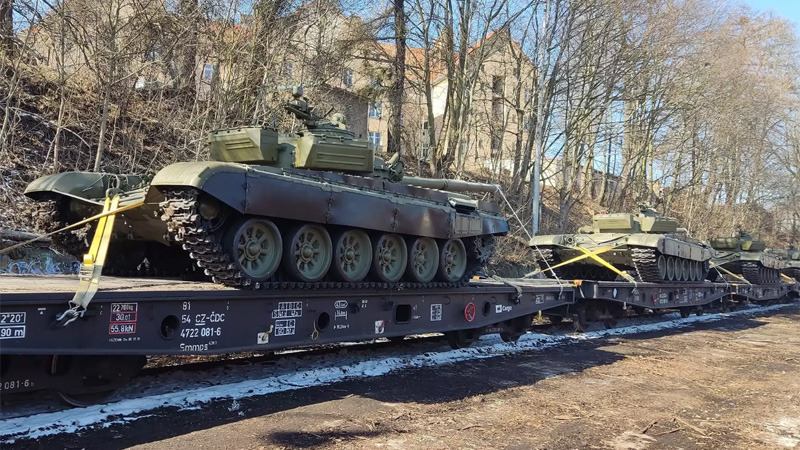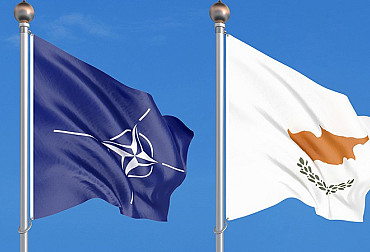Military aid to Ukraine must continue. The modernisation of the armed forces is a never-ending process
There have been clear differences in the approach of Western countries to military and other assistance to Ukraine since the beginning of the inexcusable and ongoing Russian aggression. The Czech Republic is one of the most active countries and, apart from anything else, ranks first in terms of the number of Ukrainian refugees received per 100,000 inhabitants (over 3,500 per 100,000), closely followed by Estonia and Poland. The European average is around 750. And although the Ministry of Defence, quite rightly, refuses to provide detailed information on military aid, on the basis of publicly available information it can be said that the Czech Republic is doing what it can. In general, however, the stocks of armaments, equipment, ammunition and other material that can be provided are undoubtedly significantly thinner everywhere in Europe.
 Picture: There have been clear differences in the approach of Western countries to military and other assistance to Ukraine since the beginning of the inexcusable and ongoing Russian aggression. The Czech Republic is among the most active countries. | Open Source Intelligence Monitor defender
Picture: There have been clear differences in the approach of Western countries to military and other assistance to Ukraine since the beginning of the inexcusable and ongoing Russian aggression. The Czech Republic is among the most active countries. | Open Source Intelligence Monitor defender
There have been various figures in the media since the beginning about the numbers and types of weapons and equipment that the Czech Republic has probably provided to Ukraine. Apart from the figure confirmed before the Russian invasion began on 24 February, the number of 152mm shells, the figures are not officially confirmed, and naturally not reported in advance. In general terms, the value of the material provided is reported to be close to seven billion crowns, and even in terms of the amount of this aid as a proportion of GDP, the Czech Republic is one of the countries that supports Ukraine most intensively. According to IFW data (Kiel Institute for the World Economy), the amount of financial aid to date (including the share of EU aid) puts the Czech Republic in 6th place in the world overall, and in the case of military aid in 7th place (behind the United States, Great Britain, Poland, Germany, Canada and Norway) – data published as of June this year.

In terms of specific equipment, the Mi-35 attack helicopters that the Ukrainian army is already deploying in combat – with their own insignia but in their original Czech camouflage – have attracted attention. In the context of the fire in the Bohemian Switzerland National Park, supporters of the Russian aggressor, in perhaps their most absurd form yet, have expressed the impression that these machines could have contributed to the fight against the elements. In fact, they are exactly where they are supposed to be, they are doing exactly what they are designed to do, and they could not have been used in a more appropriate way for the final phase of their life cycle – especially in view of the clearly articulated security interests of the Czech Republic. In the context of the 73rd Tank Battalion receiving the first of the Leopard 2A4s donated by the German government in a few months, and with the handover of the Polish modernized PT-91 Twardy tanks to Ukraine, it would not be surprising if Czech T-72M4 CZs would also appear in Ukraine in the future – even in their case it would be a dignified end to their life cycle (the alternative is to dismantle and scrap them, or to put them in a museum).
As mentioned, a detailed list of military aid to Ukraine has never been officially published by the Czech side, unlike, for example, Germany. The helicopters, which will be replaced by the Venom and Viper multirole and attack helicopters in the arsenal of the Czech Army from next year, arrived in Ukraine during July. By the beginning of June, IFW lists the following numbers for Czech military aid to Ukraine: 20 DANA self-propelled howitzers, 20 RM-70 multiple rocket launchers, 20 T-72(M1) tanks, 5 BVP-1s, 160 anti-tank weapons. Mi-35 (Mi-24) helicopters were to be pledged on 23 May, in a number of seven units. The list is obviously not complete. It does not include, for example, the 56 originally Swedish BVP-1s (Pbv 501A) that Germany allowed to be exported to Ukraine in late March/early April. It also does not include the 9K35 Strela-10 anti-aircraft systems. In addition, small arms and ammunition worth hundreds of millions of crowns, and other equipment have been supplied to Ukraine.
The allegations of a threat to its own defences should be rejected as unfounded. The basic argument cannot be ignored: the only real military threat that the above heavy and other weaponry should deter/repel is the Russian one. And it is precisely against this threat that Czech equipment is now being deployed and is fulfilling its purpose. The idea that it should be used effectively by the Czech Army in the foreseeable future in a situation of a direct threat to the territory of a NATO member state or even its own territory is naive to the point of desperation, and above all, such an eventuality is not seriously contemplated? It is coming from that part of the public that sees no danger in Russia.
This does not mean that the Czech armed forces do not need heavy equipment, including sufficient backups. On the contrary. But they do need modern, fully usable, fully compatible with the allies equipment. And this opens the question of "compensation". But compensation from whom, in what way?
In June, the Government asked the European Union to reimburse some military donations worth a total of CZK 3.2 billion. From the general point of view of the European taxpayer, this is an 'out-of-pocket' accounting operation; the European Union has no funds other than those it receives from the Member States, which collect them in taxes. It is an instrument by which ex-post aid to Ukraine will be better distributed among the various states, certainly among the more appropriate EU expenditures, and the Government must take advantage of this opportunity, not least in view of the tight budgetary situation.
There is also the question of compensation in kind for the equipment handed over to Ukraine. This process is most clearly observable in Poland, where the modernisation of the armed forces has gathered incredible pace. Presumably due to the long-established transatlantic bond and the large acquisitions of US military equipment such as F-16 and F-35 fighter aircraft, and the purchase of 250 Abrams tanks announced in April, it is to be expected that the subsequent purchase in July of a further 116 older tanks of this type was favourable to Poland and a form of compensation for the equipment handed over to Ukraine by the United States. In parallel, however, Poland came into sharp conflict with Germany, from which it expected a gift of four to five dozen older Leopard 2 tanks under somewhat unclear and contradictory circumstances, while Germany offered "only" two dozen.
Germany's gift of 15 Leopard 2A4 tanks to the Czech Republic can also be seen to some extent as compensation, and thus an allied solidarity in taking a share of the aid to Ukraine. Of course, this is not a charity: just as it is rational from the Czech perspective to support Ukraine with older available combat equipment, from the German perspective, in addition to indirectly supporting Ukraine and strengthening the partner allied army, it is an opportunity to put the stored older Western equipment back into service, which entails the need for maintenance and future modernisation. And although Defence Minister Jana Černochová is keeping the back door open when negotiating the purchase of 2A7+ Leopards, the takeover of older Leopards will be a significant argument for the acquisition of this particular type of tank – the Army should certainly not go down the Polish route of introducing American Abrams tanks, South Korean K2 tanks, and perhaps even British Challenger 2s into its armoury alongside the existing Leopard 2s.
In other respects, however, material offsets are rather unlikely to be forthcoming. The Venom and Viper multirole and attack helicopters, SPYDER anti-aircraft complexes, and CAESAR self-propelled guns are in the pipeline; supersonic aviation, modern tanks, and IFVs are in the works. The use of European Union funds for modernisation/acquisition projects is on the table, but otherwise the issue of our security is primarily in our hands. To get commitments, to speed up the modernisation of the Army and to bring it as soon as possible to a level where it will be able, in cooperation with allied forces, to deter, or at worst repel, a possible (Russian) invader.
It must be accepted as a fact that modernising the armed forces is an endless and costly process. There is no point "P" that we are working towards, and once we reach it, we will have accomplished it. The defence industry has a crucial role to play in this process and unnecessary administrative and other obstacles need to be removed from its path in order to develop the armed forces effectively. The media may be exaggerating somewhat the black scenarios concerning the uncertain autumn and winter reality, when we will find out to what extent Europe is really dependent on Russian raw materials. Higher energy bills will come after the summer holidays, inflation growth is slowing, but inflation is still rising. Despite some fatigue with the war news from Ukraine, military aid to Ukraine must continue, even though its nature will inevitably change as stocks of old weapons run out. The security of the Czech Republic is not a given and there are costs associated with it, which will also increase. Let us look to Poland and the Baltics. The countries neighbouring Russia know what they are doing and why.





















